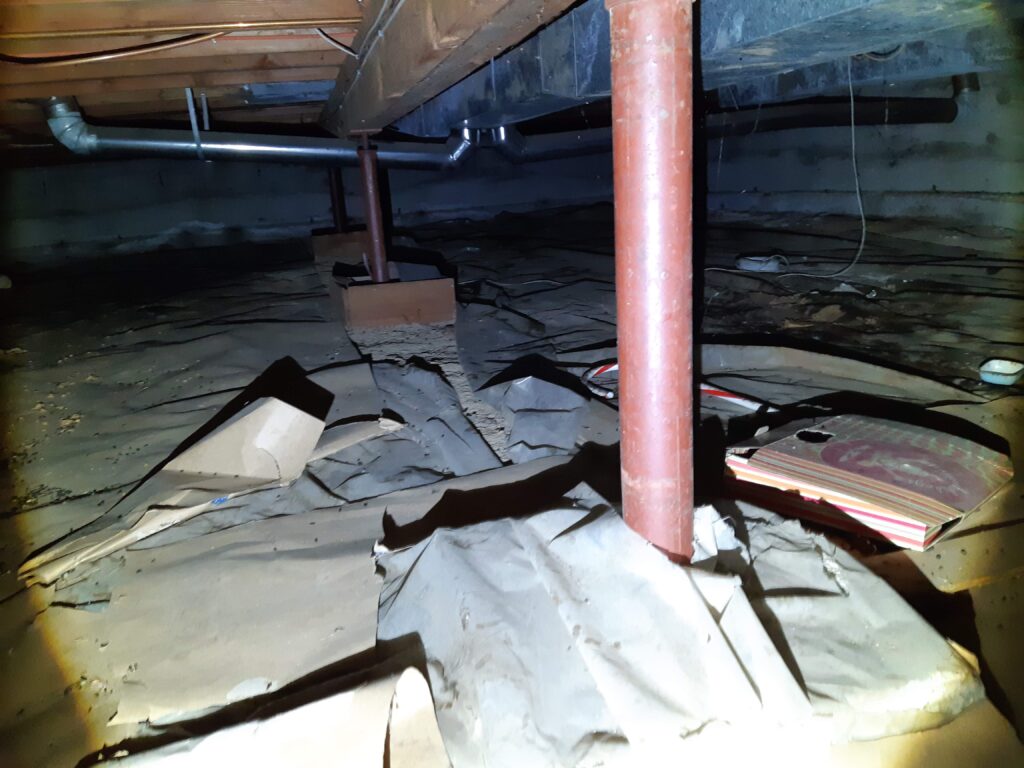A home inspector examines a crawl space as part of a comprehensive home inspection to assess the condition of a property. In a crawl space, they are primarily looking for various issues that could impact the structural integrity, safety, and overall health of the home. Here’s what a home inspector typically looks for in a crawl space:
- Moisture and Water Intrusion: Moisture issues can lead to mold, rot, and other structural problems. Inspectors look for signs of water entry, such as dampness, water stains, puddles, or condensation. Standing water and excessive moisture can indicate poor drainage, leaky pipes, or inadequate ventilation.
- Ventilation: Proper ventilation is crucial to prevent moisture buildup and maintain a healthy crawl space environment. The inspector checks for the presence and functionality of ventilation openings to ensure adequate air circulation.
- Insulation: Proper insulation in the crawl space helps regulate temperature and prevent energy loss. Inspectors assess the condition and type of insulation, ensuring it’s properly installed and in good shape.
- Structural Issues: The inspector examines the crawl space for any signs of sagging or damaged floor joists, beams, and support columns. These issues can compromise the structural integrity of the home and need to be addressed promptly.
- Pests and Pest Damage: Crawl spaces can attract pests like rodents and insects. Inspectors look for signs of infestations and damage caused by pests, as well as evidence of measures taken to prevent or address pest issues.
- Foundation Concerns: Inspectors assess the foundation walls and piers for cracks, deterioration, or shifting. Any issues with the foundation can lead to structural problems throughout the home.
- Dampness and Mold: Excess moisture can lead to mold growth, which poses health risks and can damage materials. Inspectors search for visible mold, mildew, and signs of previous mold remediation.
- Electrical and Plumbing Components: The inspector checks for any exposed wiring, plumbing leaks, or damaged pipes that might be present in the crawl space. Faulty electrical or plumbing systems can pose safety hazards.
- Vapor Barrier: A vapor barrier is a moisture-resistant material placed on the ground to prevent moisture from rising into the crawl space. Inspectors assess the condition and effectiveness of the vapor barrier.
- Access and Safety: The inspector examines the accessibility and safety of the crawl space entry. Proper access is important for maintenance and repairs, and safety measures such as handrails and lighting might be evaluated.
- Crawl Space Cleanliness: A clean crawl space is less likely to harbor pests and moisture issues. Inspectors take note of any debris, clutter, or signs of poor maintenance.
- Overall Condition: Inspectors provide an overall assessment of the crawl space’s condition, noting any potential problems that may need further investigation or repair.
Tip
Hands down, the crawlspace is an inspector’s least favorite space to enter; however, it is one of the most essential areas of the whole home inspection because many of the house systems are exposed to viewing. In addition, its condition in terms of moisture ingress, evidence of pests and visibility of mold growth are certainly critical to knowing if there may be health related issues to occupants. Remember that a thorough crawl space inspection is part of a larger assessment of the entire home.
When the inspector identifies issues in the crawl space, they will typically recommend further evaluation by specialists or contractors to determine the extent of the problem and the necessary repairs or improvements.
Make sure that your home inspection always includes the crawlspace.

